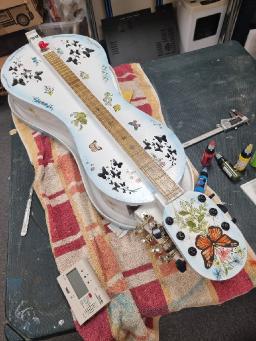String guages for slide dulcimer
General mountain dulcimer or music discussions
Good luck on your explorations. Please give us some reports since there is little information on slide playing available.
Most slide work seems to have been done with electric or resonator dulcimers, not traditional bodies. These give a much stronger sustain to the notes. Much of this is done with extended string sets, going beyond simple DAD tuning.
My playing is in DAA, and I have no plans to do DAD.
I would say that you will be pushing your luck if you try to make the melody string heavier than an .012 - there are good reasons why we don't find .014 melody strings in the "dulcimer" sets sold, although they might sound better for us DAA folks.
I like a low middle string, tuned below the bass D. I've used an .028 for that, if my memory is correct. That won't work well in DAD because you can't then move to the middle string to get the low A in a melody.

